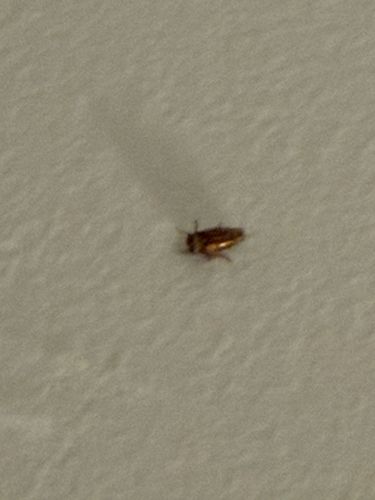Cockroach (likely German Cockroach nymph)
Scientific Name: Blattella germanica (nymph)
Order & Family: Blattodea, Ectobiidae
Size: Nymphs are significantly smaller than adults, typically ranging from 2 mm to 10 mm in length as they mature.

Natural Habitat
Commonly found indoors in human dwellings, preferring warm, moist areas such as kitchens, bathrooms, and food preparation areas. They hide in cracks and crevices during the day.
Diet & Feeding
Omnivorous scavengers. They eat almost anything, including food scraps, grease, starches, sweets, meats, and even non-food items like soap, glue, and toothpaste.
Behavior Patterns
Nocturnal and highly reproductive. Nymphs molt several times before reaching adulthood. They are typically found in congregations and can spread quickly. They often forage at night and hide during the day.
Risks & Benefits
Risks: Can be a significant household pest. They can spread bacteria (e.g., E. coli, Salmonella), allergens, and pathogens, potentially causing asthma and allergy symptoms. They can also contaminate food and surfaces. They have no known benefits to humans or ecosystems in an indoor infestation context.
Identified on: 11/13/2025